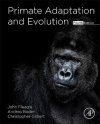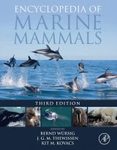Textbook
By: John G Fleagle(Author), Andrea Baden(Author), Christopher Gilbert(Author)
470 pages, 200+ b/w photos and b/w illustrations, tables
![Primate Adaptation and Evolution Primate Adaptation and Evolution]()
Click to have a closer look
About this book
Contents
Customer reviews
Biography
Related titles
About this book
This new fourth edition of Primate Adaptation and Evolution is a thorough update of the text of choice for courses in primate evolution. The book retains its grounding in the extant primate groups as the best way to understand the fossil trail and the evolution of these modern forms. However, this coverage is now more streamlined, referring to the many new and excellent books on living primate ecology and adaptation – a field that has burgeoned since the first edition of Primate Adaptation and Evolution.
By drawing out the key features of the extant families and referring to more detailed texts, Primate Adaptation and Evolutio sets the scene and creates space for a thorough updating of the exciting developments in primate palaeontology and the reconstruction through early hominid species of our own human origins. This updated version covers recent developments in primate palaeontology and the latest taxonomy, and includes new visuals including helpful illustrations and evolutionary trees.
Primate Adaptation and Evolution is the ideal text for undergraduate and post-graduate students studying the evolution and functional ecology of primates and early fossil hominids.
Contents
1. Adaptation, Evolution, and Systematics
2. The Primate Body
3. Primate Lives
4. The Prosimians – Lemurs, Lorises, Galagos, and Tarsiers
5. New World Anthropoids
6. Old World Monkeys
7. Apes and Humans
8. Primate Communities and Biogeography
9. Primate Adaptation
10. The Fossil Record
11. Primate Origins
12. Fossil Prosimians
13. Early Anthropoids
14. Fossil Platyrrhines
15. Primate Catarrhines and Fossil Apes
16. Fossil Old World Monkeys
17. Fossil Hominins – Bipedal Primates
18. Patterns in Primate Evolution
Customer Reviews
Biography
John Fleagle is a primatologist whose research combines field studies and functional morpho-logical analysis. He is interested in the adaptive radiation of primates during the last 50 million years. He has conducted paleobiological research in Egypt, Argentina, and Ethiopia and has studied living primates in Malaysia, Surinam, Brazil and Madagascar. Dr. Fleagle is a MacArthur Fellow.
Textbook
By: John G Fleagle(Author), Andrea Baden(Author), Christopher Gilbert(Author)
470 pages, 200+ b/w photos and b/w illustrations, tables
Reviews of the First Edition:
"Fleagle's book [...] is a tour de force as well as a tour d'horizon of the primate order [...] Fleagle's book fills a long-standing need for a comprehensive and up-to-date introductory text in its field."
– Nature
"Just occasionally in academic life there comes together in one person research ability, industry, and the willingness to communicate. This is indeed the case for John Fleagle's textbook. An admirable book that deserves the success that it will undoubtedly achieve."
– Biology and Society
"Professional primatologists and students alike will be delighted with John Fleagle's Primate Adaptation and Evolution, which will brilliantly refresh any university reading list in the subject. For many university courses on primate biology, it will undoubtedly become a primary text."
– The Times Higher Education Supplement
"This is an excellent book on primate comparative anatomy, behavioral ecology, and paleontology."
– American Anthropologist
"John Fleagle has done it! Primate Adaptation and Evolution is the readable and "seeable," but still traditional, textbook that my students have been waiting for someone to write."
– American Journal Of Physical Anthropology
"This book will be welcomed with a sigh of relief in departments of anatomy and biological anthropology world-wide. Here at last is an up-to-date, comprehensive and reliable textbook for courses in primate and human evolution [...] It will, and should, stand as a major teaching resource for primate evolution for some years to come. It is an excellent text and a reflection of Fleagle's major contributions to our field."
– Primate Eye
"This volume is basically designed as an advanced undergraduate or graduate textbook but is so well illustrated and organized that it can also be used as a general source or reference for less specialized readers. No other single work can match the range of its topics, which matches the interests of its author, one of the leading students of primate paleontology, behavior, morphology, and evolution."
– Choice


































